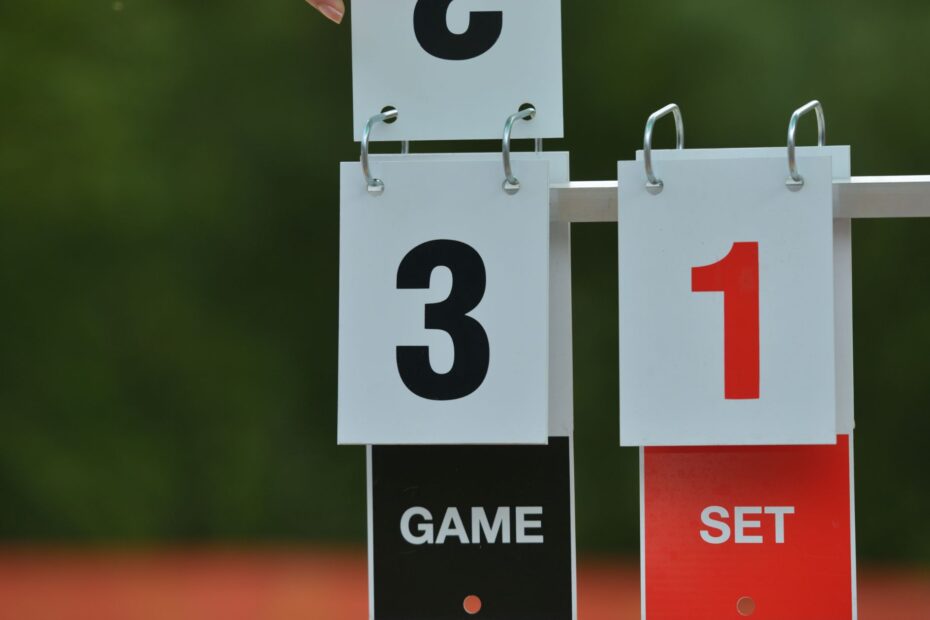Tennis is a globally beloved sport, but its scoring system often baffles newcomers. Why do we count points as 15, 30, and 40? What’s the origin of “love” for zero, and how did tie-breaks come to be? The unique scoring structure of tennis has deep historical roots and practical reasons. This article uncovers the mysteries behind tennis scoring and explains how it evolved into the system we know today.
The Basics of Tennis Scoring
Before exploring the history, let’s break down how tennis scoring works:
- Point System: Matches are divided into points (15, 30, 40), games, and sets. A player wins a game by earning at least four points and maintaining a two-point lead.
- Deuce and Advantage: If both players reach 40-40 (deuce), one must win two consecutive points to claim the game.
- Sets and Matches: Matches are typically decided by winning the best of three or five sets. A set is won by the first player to win six games with a two-game lead.
This structure creates suspense and strategic depth, but why was it designed this way?
Historical Origins of Tennis Scoring
Theories About the Medieval Game of Jeu de Paume
Tennis scoring traces its roots to the 12th-century French game jeu de paume (game of the palm), a precursor to modern tennis. Points were initially marked using a clock face, moving the hand to the quarter-hour positions: 15, 30, and 45.
The Transition from 45 to 40
Why did 45 become 40? One theory suggests it was for practicality. Announcing “40” is quicker and simpler during gameplay, while still reflecting the original clock-based system. Another idea is that the change was meant to differentiate deuce from 45 points to simplify scoring.
The Introduction of Deuce and Advantage
The terms “deuce” and “advantage” were introduced to maintain fairness in closely contested games:
- Deuce: From the French phrase à deux le jeu (the game is tied).
- Advantage: Allows one player to secure a lead, emphasizing the importance of consistency and focus under pressure.
These rules made tennis competitive and strategic, creating the drama we associate with the sport today.
Why Do Tennis Matches Use Sets?
Historical Context of Sets
The concept of sets was introduced to ensure matches didn’t end too quickly. In earlier formats, single-game matches could be decided in minutes, making it difficult to judge a player’s true skill.
- Sets as a Measure of Endurance: By requiring players to win multiple games within a set and several sets to win a match, tennis tests both mental stamina and physical fitness.
Alternative Scoring Systems in Tennis
Tie-Breakers
Introduced in the 1970s to address overly long matches, tie-breaks conclude sets tied at 6-6. Players compete to reach seven points first (with a two-point margin).
- Impact on the Game: Tie-breaks add intensity while preventing matches from dragging on indefinitely.
No-Ad Scoring
Used in doubles, this system eliminates deuce and allows a single deciding point at 40-40. It’s designed for faster-paced matches.
Fast4 Tennis
A modern innovation where sets are played to four games instead of six, with tie-breaks at 3-3. It’s gaining popularity for its viewer-friendly format.
Comparing Tennis Scoring to Other Sports
Tennis scoring stands out for its emphasis on strategy and suspense:
- Unlike continuous scoring games like basketball or football, tennis requires players to win points under pressure at critical moments (e.g., break points, tie-breaks).
- The unpredictable nature of deuce and advantage keeps matches exciting and forces players to adapt constantly.
FAQs About Tennis Scoring
- Why does tennis use 15, 30, and 40 instead of 1, 2, 3?
The scoring system originated from medieval clock faces, with points marked at 15, 30, and 45 minutes. - What does “love” mean in tennis scoring?
“Love” represents zero and likely comes from the French word l’oeuf (the egg), symbolizing zero due to its shape. - When was tie-break scoring introduced?
Tie-breaks were first used in the 1970s to prevent sets from lasting indefinitely. - Are there any scoring systems simpler than traditional tennis scoring?
Yes, no-ad scoring and Fast4 formats simplify traditional rules for quicker gameplay. - Why do some tournaments still avoid tie-breaks in final sets?
Grand Slam events like Wimbledon historically preferred long final sets to preserve tradition, although many now use tie-breaks.
Conclusion
The unique scoring system in tennis blends tradition, practicality, and strategy. Its historical roots in medieval France, combined with modern innovations like tie-breaks, make tennis both timeless and adaptable. Understanding this system not only deepens appreciation for the game but also highlights the intricate balance of skill and endurance that defines this sport.






